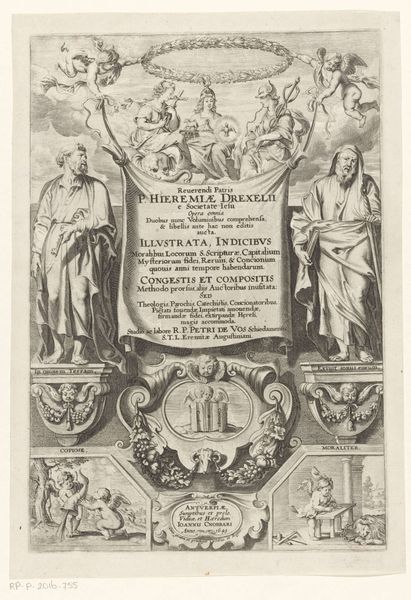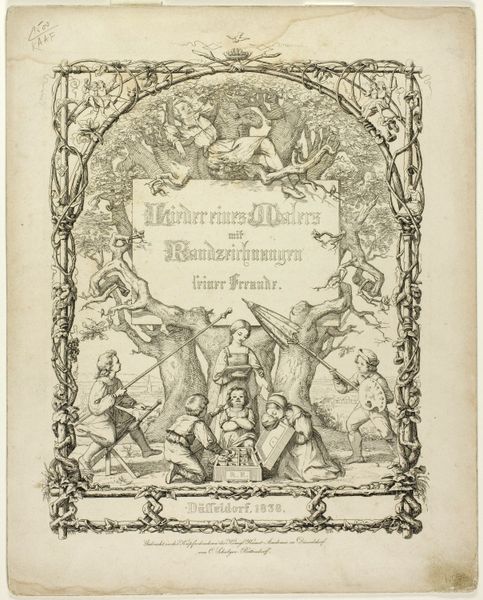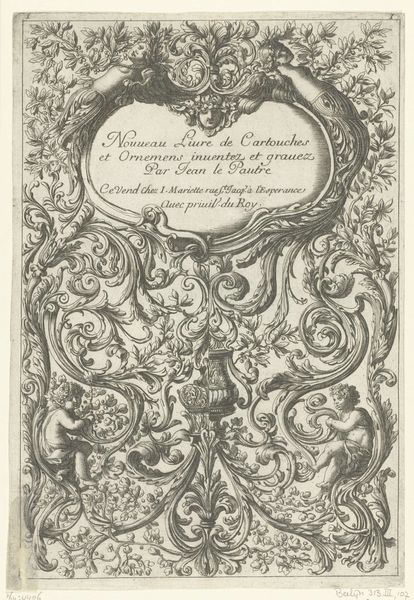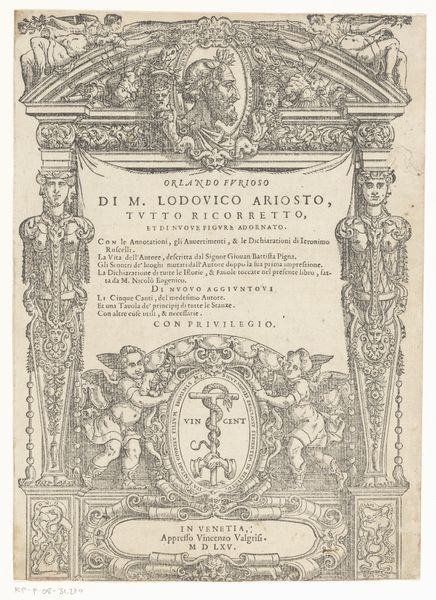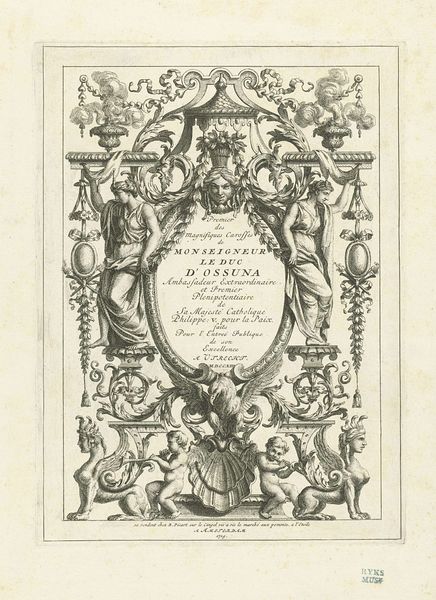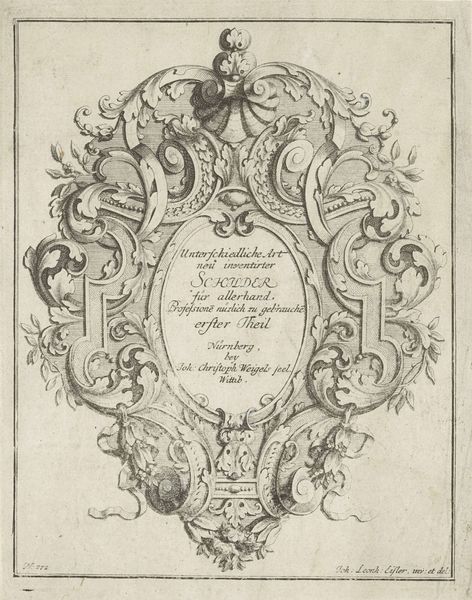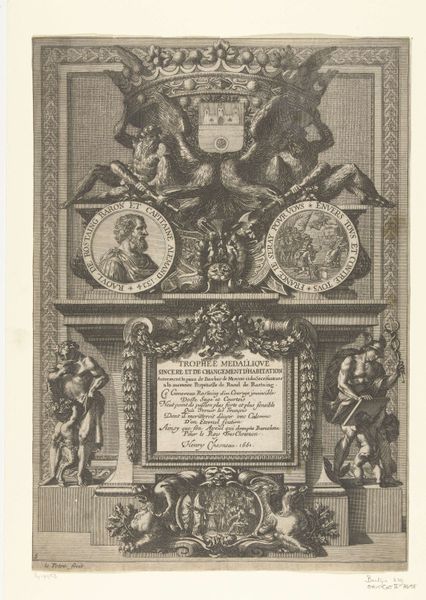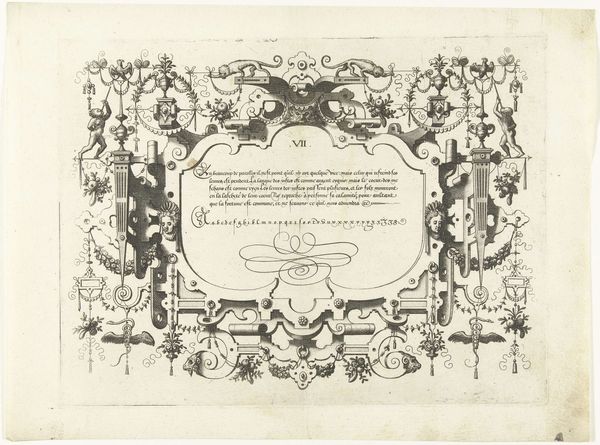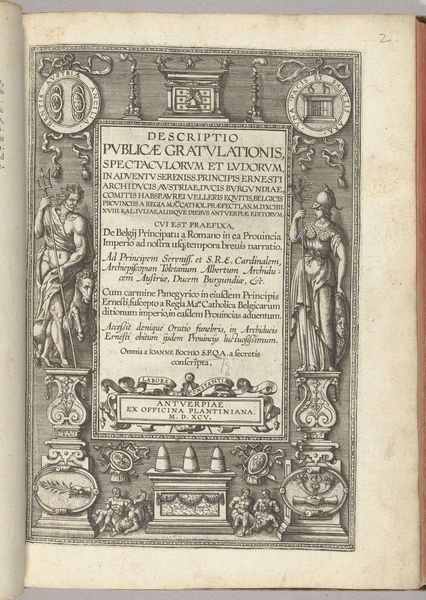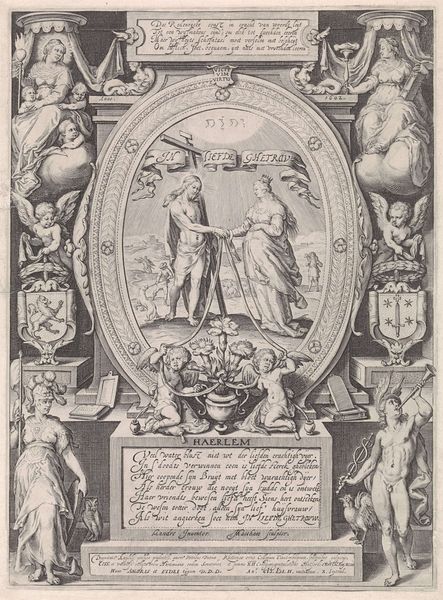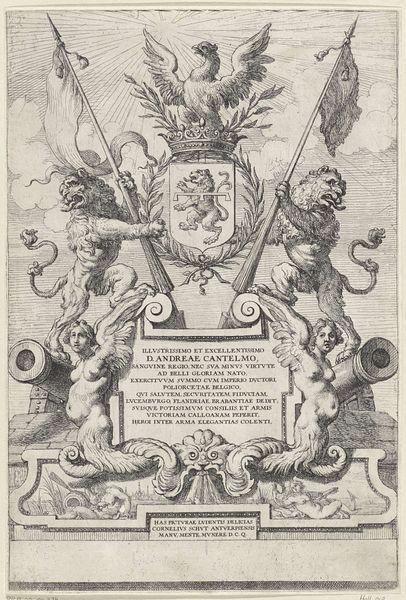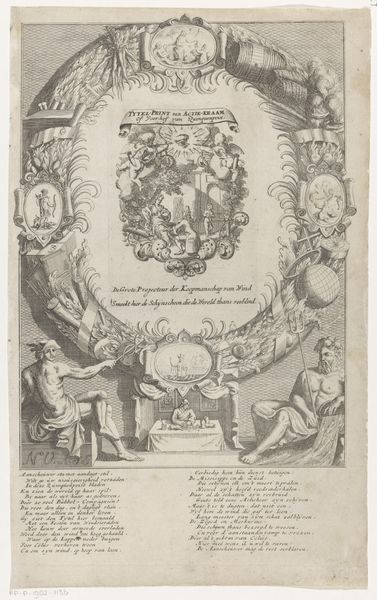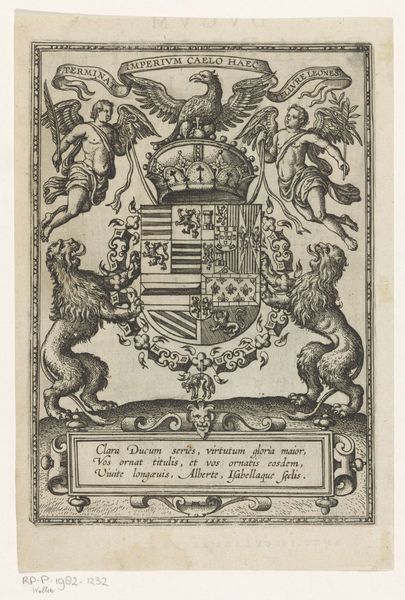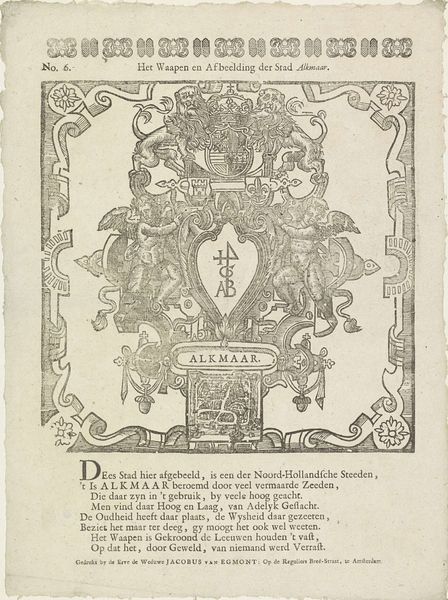
print, ink, engraving
#
narrative-art
#
pen drawing
#
dutch-golden-age
# print
#
ink
#
history-painting
#
engraving
Dimensions: height 287 mm, width 181 mm
Copyright: Rijks Museum: Open Domain
Abraham Dircksz. Santvoort created this print titled 'Scenes from the Biblical Book of Numbers,' sometime in the mid-17th century. The print is replete with cherubic figures surrounding framed vignettes, each illustrating moments from the Book of Numbers. These framed images act as windows into biblical narratives, but they also draw upon a rich tradition of emblem books, popular during the Renaissance and Baroque periods. The cherubs here are not merely decorative; they evoke a sense of divine presence and innocence. We find these figures throughout art history, from classical depictions of Cupid to Renaissance portrayals of angelic beings, each time signifying a connection between the human and the divine. The vignettes themselves, framed and contained, remind us of the human desire to capture and understand the divine narrative. This act of framing, of creating a boundary around a sacred scene, mirrors the way we attempt to organize and comprehend our own spiritual experiences. Consider how these images resonate with our collective memory. The cherubs, the frames, and the biblical scenes trigger a complex interplay of cultural and emotional responses. These recurring symbols tap into deep-seated psychological states, engaging us on a profound, subconscious level. The non-linear progression of these symbols—from ancient depictions of deities to Renaissance cherubs and beyond—demonstrates how cultural motifs resurface, evolve, and take on new meanings across different historical contexts, perpetuating their emotional and psychological power.
Comments
No comments
Be the first to comment and join the conversation on the ultimate creative platform.
